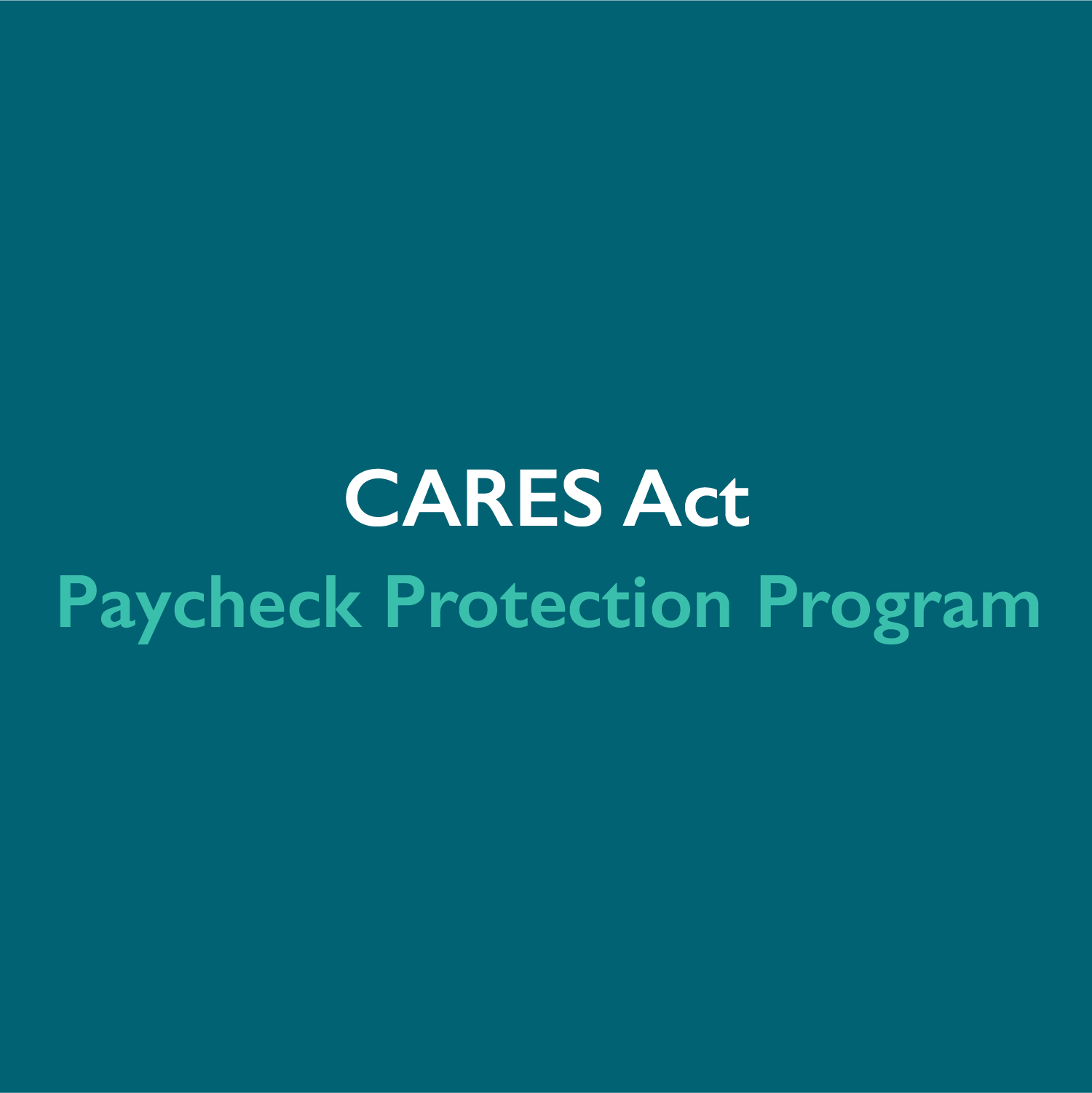By Nicholas Sanchez, J.D., LL.M. Taxation; and Kaveh Imandoust, J.D., M.B.T., CPA
As agencies continue to release guidance on the relief provisions contained in the Coronavirus Aid, Relief, and Economic Security Act (CARES Act), we are beginning to find answers to questions for which we previously could only speculate. In the last two weeks, both the Internal Revenue Service (IRS) and Small Business Administration (SBA) have clarified how certain mechanics of Paycheck Protection Program (PPP) loans – perhaps the highlight of the CARES Act – will operate. Since there has been some confusion regarding those announcements, here, we break down the key components.
Deductibility of Expenses
The PPP allows a borrower to use loan proceeds to pay payroll costs, certain employee healthcare benefits, mortgage interest, rent, utilities and interest on other existing debt. The CARES Act provides that these loans will be forgiven to the extent used for certain expenses (see more on this below) during the 8-week period after origination of the PPP loan. Further, this forgiveness, which would otherwise result in cancellation of indebtedness income is excluded from gross income under the CARES Act. (There are nuances to this – please see our prior Tax Alert on PPP loans for additional information.) However, the question most people had was whether these expenses would still be deductible.
On April 30, 2020, the IRS issued Notice 2020-32, which clarifies that no deduction is allowed for an expense paid with PPP loan proceeds that are forgiven. For example, if a borrower uses PPP loan proceeds to pay wages to employees for the 8-week period after obtaining the loan, and the loan is subsequently forgiven and excluded from income, those wages may not also be deducted on the borrower’s tax return even though wages would otherwise be an ordinary and necessary business expense. To be clear, the disallowance of the deduction does not result in income to the borrower, but there is no benefit either (i.e., it’s a wash).
Many tax professionals had assumed this would be the case, but the IRS’ guidance was nonetheless a disappointment. While it is easy to vilify the IRS, the agency’s position is consistent with long-established tax law principles. Still, since the denial of a deduction is also logically contrary to the purpose of the PPP, many, including the American Institute of CPAs (AICPA), have advocated for a legislative fix. On May 5, 2020, the Senate introduced the Small Business Expense Protection Act of 2020 (S. 3612), which would allow the deduction.
SBA Loan Certification Requirements and New Safe Harbor
The CARES Act requires borrowers to certify that “the uncertainty of current economic conditions makes necessary the loan request to support the ongoing operations of the eligible recipient.” Guidance issued by the SBA on April 23, 2020 (FAQ 31) requires borrowers to consider other sources of liquidity and current business operations in determining their economic need for a PPP loan. FAQ 31 also provides that any borrower that applied for a PPP loan prior to the issuance of FAQ 31 but repaid the loan by May 7, 2020 (subsequently extended to May 14, 2020) will be deemed to have made the required certification in good faith. This guidance caused immediate panic and uncertainty among borrowers who had received PPP loans or were in the application process.
On May 13, 2020, the SBA issued an update, by way of FAQ 46, revising its previous guidance for PPP loan borrower certifications. FAQ 46 limits the scope of FAQ 31 by creating a safe harbor whereby borrowers with PPP loans of less than $2 million will be deemed to have made the required certification in good faith.
Borrowers with loans of more than $2 million remain subject to the FAQ 31 certification requirements. However, FAQ 46 provides that if those borrowers are found to have “lacked an adequate basis for the required certification concerning the necessity of the loan request,” they will be required to repay the loan and will not be eligible for loan forgiveness. The SBA will neither pursue administrative enforcement, nor refer to other agencies in such case.
According to FAQ 46, the SBA issued this guidance because it determined that the safe harbor was appropriate because borrowers with loans below the $2 million threshold are “generally less likely to have had access to adequate sources of liquidity in the current economic environment than borrowers that obtained larger loans.” According to the SBA, the safe harbor also promotes economic certainty as PPP borrowers with more limited resources endeavor to retain and rehire employees.
Planning for Loan Forgiveness: Best Practices
To be eligible for PPP loan forgiveness, borrowers must use the funds to pay forgivable expenses. These include:
- Payroll costs (for self-employed borrowers, these costs include the net profit amount from your business, as reported on your 2019 tax return),
- Interest payments on mortgages incurred before 2/15/20,
- Rent payments on leases dated before 2/15/20, and
- Utility payments under service agreements dated before 2/15/20.
According to the SBA, not more than 25% of the forgivable loan amount may be attributable to eligible nonpayroll costs. In other words, at least 75% of the loan must be used for payroll costs.
To help meet this requirement, borrowers should consider implementing the following best practices:
- Set up a separate bank account for PPP funds, or deposit funds into your business savings account and transfer the money to checking and payroll accounts when needed.
- Gather and analyze mortgage documents, leases, and utility bills to make sure obligations arose prior to 2/15/20.
- If expenses are paid with a business credit card, make sure that portion of the credit card bill is paid with PPP funds before the end of the 8-week period.
Average Number of Employees
For the 8-week period after loan origination, if the average number of full-time equivalent employees per month is less than the average during a lookback period, the forgivable loan amount will be reduced. The lookback period is either (a) 2/15/19 through 6/30/19, or (b) 1/1/20 through 2/29/20. It is imperative that borrowers keep track of employee headcount and payroll during this period.
Salary Levels
Loan forgiveness will be reduced if salary levels are reduced by more than 25%. For each employee who earns less than $100,000, borrowers must compare total salary paid during the 8-week activity after loan origination with that employee’s salary during the most recent full quarter. If the reduction is greater than 25%, a corresponding reduction must be made to the loan forgiveness amount. This test requires employers to look at each employee individually, not in the aggregate.
Employment Restoration
If borrowers have already laid off or furloughed workers, they should be restored by 6/30/20. Borrowers who are able to perform restorative hiring will be permitted to disregard reductions that occurred between 2/15/20 and 4/26/20 (borrowers do not have to rehire the same employees). Rehired workers do not have to perform customary work duties (consult with your labor and employment attorney to discuss all rehiring).
Recordkeeping
At the end of the 8-week period, borrowers must demonstrate to their lenders that they used the PPP loan for eligible expenses. Recordkeeping becomes paramount. We recommend creating a spreadsheet of all eligible expenses as they are incurred. We also recommend maintaining the following documentation:
- Employee headcount calculations
- Payroll tax filings (both federal and state)
- Mortgage documents, leases, and utility bills
- Cancelled checks and payment receipts
- Bank statements (whether a separate or commingled account) for the account(s) used to pay forgivable expenses.
Certify Documentation
Borrowers cannot apply for forgiveness until after the 8-week period. Borrowers will need an authorized representative to certify that the documentation presented is true and correct; and the amount for which forgiveness is requested was used to retain employees, make interest payments on a covered mortgage obligation, make payments on a covered rent obligation, or make covered utility payments. Lenders have 60 days to review a loan forgiveness application.
If Loan is Not Forgiven
If, and to the extent, a PPP loan is not forgiven, the unforgiven portion of the loan will be subject to a two-year note with a 1% interest rate. Payments will be deferred for six months (although interest will continue to accrue). No collateral or personal guarantee is required, nor is there are a prepayment penalty.
____________________________________
We highly recommend you confer with your Miller Kaplan advisor to understand your specific situation and how this may impact you.



